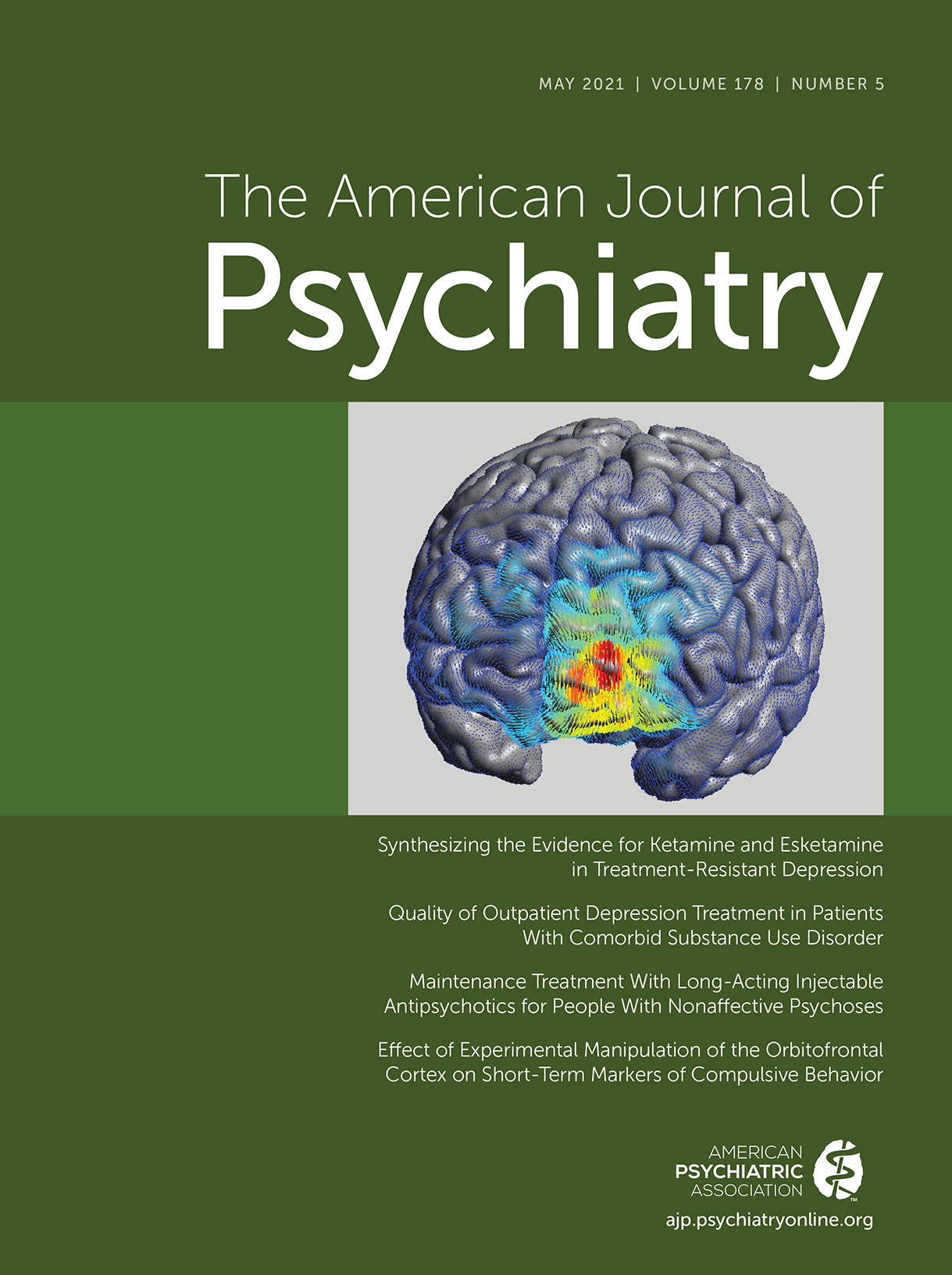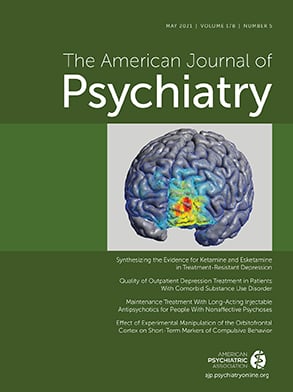T
o the E
ditor: Commenting on the interpretation of results from our study using neuromelanin-sensitive MRI (NM-MRI) in cocaine use disorder (
1), Leyton questioned whether we underemphasized evidence of elevated dopamine transmission under certain conditions in addiction. He suggested an alternative explanation for the elevated NM-MRI signal we observed in cocaine use disorder as resulting from increased dopamine transmission. We agree that this and other possible explanations for our data should be evaluated. We had indeed discussed the possibility that elevated NM accumulation could reflect increased dopamine transmission during acute cocaine exposure, and perhaps a similar phenotype could arise from increased cue-induced dopamine signaling as Leyton suggests.
We do, however, caution that the hypothesized model we put forward to situate our findings within the dopamine-imaging literature in cocaine use disorder should not be taken as a general model of addiction or addiction risk. In cocaine use disorder, consistent evidence indicates a blunting of dopamine release—as described in a meta-analysis of positron emission tomography (PET) studies consistently showing that cocaine use disorder is associated with blunted stimulant-induced dopamine release (
2). Given this and our previous work showing a positive relationship between NM-MRI signal and dopamine release capacity, we hypothesized a priori that cocaine use disorder would exhibit a decrease in NM-MRI signal. We instead observed a robust increase. Although this result was surprising, we do not believe that this finding challenges the meta-analytical evidence for blunted dopamine release in cocaine use disorder (
2). Indeed, upon closer inspection of the literature, we found that the consistent findings of a decrease in vesicular monoamine transporter 2 (VMAT2) in cocaine use disorder (and in nonhuman primates chronically exposed to cocaine) (
3–
5) may be readily reconciled with both our finding of decreased NM-MRI signal and the PET findings of blunted dopamine release (because decreased VMAT2 would increase cytosolic dopamine, boosting NM formation [
6,
7], and would decrease the vesicular dopamine pool available for release). As discussed in more detail in our article, we consider this biologically plausible scenario as a parsimonious model with the potential to integrate results from several lines of research. This hypothesized model does not, of course, preclude the possibility of increased dopamine signaling in cocaine use disorder under certain conditions or stages of the illness, which in principle could compound a reduction in VMAT2 expression to further augment NM accumulation.
In conclusion, we hypothesized a possible explanation for elevated NM-MRI signal in cocaine use disorder in terms of VMAT2-related changes in dopamine trafficking that warrants empirical testing against alternative hypotheses, for instance, via multimodal studies with NM-MRI and PET measures of dopamine transmission and VMAT2 density. We hope that our work stimulates additional research that can address these critical questions and that NM-MRI contributes new information to achieve an integrated understanding of molecular mechanisms of addiction.

